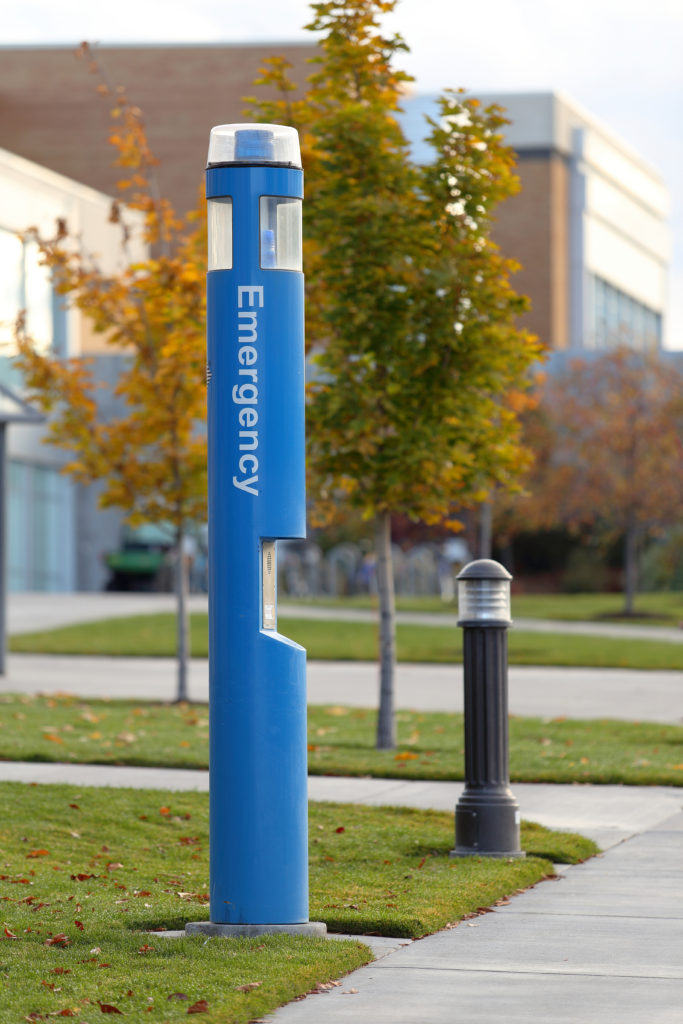Colleges in the U.S. are stepping up their security game

Adapting with the modern day security programs
With the growing complexity of the modern day security programs, it is becoming increasingly essential for organizations to comprehend as much of what’s happening in the security landscape. Understanding new age technologies and strategies surrounding them can be a critical aspect of success for any organization and therefore, must be addressed with specialized efforts. Find out how organizations are keeping pace with the latest advancements in the security sector, as Dr. Niyazi Bodur shares his insights on a wide range of physical and virtual security threats.
Dr. Bodur oversees all of his university’s information technology and telecommunication services, as well as facilities management, design and construction, and security.
He has 27 years of professional experience in information technology, business-driven engineering research and development, instruction, and academia, as well as with major construction and renovation projects. He is highly proficient in leading and managing a variety of IT and facilities functions.
What are the key components that one must take into consideration while securing an organization?
In my opinion, securing any organization has to be an effective mix of humans and technology. While humans can play an imperative role in identifying threats and tracking abnormalities, be it in the physical or virtual space, technology can be utilized to augment these human efforts to obtain optimum results. Harmonizing properly trained and sensitized staff with relevant technologies will successfully assist in offsetting any imminent attack, both in terms of technical and physical security.
At our university, we employ staff members who continuously monitor global security practices in order to be effectively prepared before anything happens. These two components are further strengthened by other factors such as sound strategies, strong relationships with local police force, law enforcement meetings and drills.
What precautions and safety measures does your institution keep in mind while formulating a security plan for your organization?
The first step is to assess the available technologies and leverage them for the best protection of the college by encouraging a relatively simple and open flow of information among the faculty, students and other third party collaborations. While understanding the threats and solutions becomes the underlying factor of any security mechanism, we believe it is important to adopt a more pro-active approach rather than a reactive one. Thus, we do not just strategize systems to simply tackle the threats in real time but also understand patterns to eliminate threats before their arrival.
For example, the systems at our college were able to successfully tackle the recent WannaCry threat because of its pro-active approach. You cannot simply rely on a reactive model for disruptions as huge as this one.
How often do you update the security systems of your institution to overcome such a wide array of threats?
Our firewalls and other security devices in the network are updated automatically. The frequency of these updates are primarily subject to the vendor making patches or the availability of new updates in the market. The systems are also upgraded whenever a virus is detected or vulnerabilities in the system are tracked.
It is also essential to note that the demographics of virtual security are now constantly evolving. Ransomwares are emerging based on the concept of social engineering which involves targeting particular individuals or groups. Another concept is spear fishing, which is in the form of a fake email from a known contact containing a link. If you click the link you become a victim. Therefore in addition to updates, sensitizing users on these threats also plays an important role in overcoming their impact.
Could you elaborate on how new technologies in security impact the way you secure your premises?
I believe we are currently at a stage where things are just starting to take off and there is a lot of room for evolution. It is therefore crucial to stay abreast of all the new technologies and implement them as they come. In terms of virtual security, new and innovative tools and strategies assist in minimizing the threat significantly.
New technologies are also playing a critical role in terms of physical security, with now substantially improved IP cameras enabling better surveillance and precise outcomes. We can now constantly be on the lookout for any perceived or real threats by strategically placing cameras in critical areas, as the new technologies have brought the IP surveillance to areas where it might not have been otherwise practical.
How do you think we should feel in terms of security?
One of our biggest assets in terms of security is our knowledge and the ability to educate ourselves. Security problems will happen to us all at some point in life at some level or another. Nothing is 100% secure. We are now living in a virtual world, where hackers are giving new definitions to online threats every day. Therefore, we must make efforts to familiarize ourselves with such situations by staying updated with the latest detector and prevention systems, backing up data regularly on more than one device, watching out for Bitcoin, and staying alert in the overall sense.

